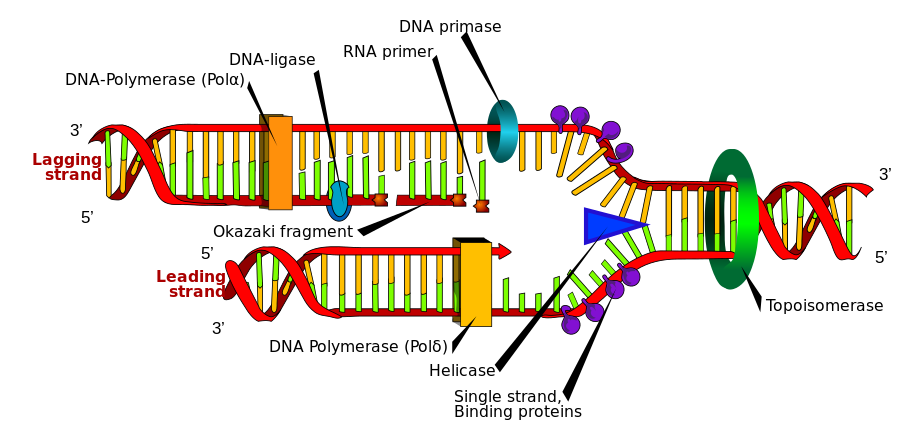DNA is a molecule with two strands. Only one strand codes for proteins at every given position in the molecule. However, during DNA replication, usually both strands are utilized.
DNA replication is a very complex process and involves four important phases – Replication fork formation, Primer binding, Elongation and Termination.
First, the DNA molecule is “unzipped” into two strands by breaking apart the H-bonds and forms a replication bubble. Then two short primers (short fragments of DNA/RNA) bind to the origin of replication. Starting from the origin of replication, two strands of DNA are synthesized adding the nucleotides to the nascent DNA chain.
During this process of elongation, the bidirectional replication is a single replication assembly line that synthesizes DNA in both the forward and reverse directions. While it may be possible for a single DNA replication system to synthesize DNA in both directions, it would require the use of two replication machines (a process referred to as replisome ).
The process of bidirectional replication of DNA
First, the replication hub serves as the starting point for the replication of DNA.
DNA polymerase, the enzyme which makes the chemical bonds between the nucleotides during the process of DNA replication, is present in the replication hub.
In contrast to unidirectional replication, bidirectional DNA replication is characterized by initiation at both ends of a chromosomal region, i.e. both 3′ and 5′ ends. Essentially, at least two replication complexes are bound to the chromosome at the initiation site in this process.
As the DNA polymerase moves along the chromosome, it adds nucleotides to the growing strand in 3′-5′ direction (the leading strand). Another complementary strand of DNA is created by having the DNA polymerase moving in reverse in 5′-3′ direction (the lagging strand). The lagging strand is synthesized in small fragments (the Okazaki fragments) due to its unconventional direction of replication. This is how the bidirectional replication system works.

Significance of bidirectional DNA replication
Bidirectional replication of DNA is an essential process for stable inheritance and the maintenance of chromosomes.
Also, bidirectional replication is beneficial in organisms that are frequently exposed to harmful agents that damage DNA. If one strand of DNA is damaged, then the other strand can be used to allow the cell to continue to replicate.